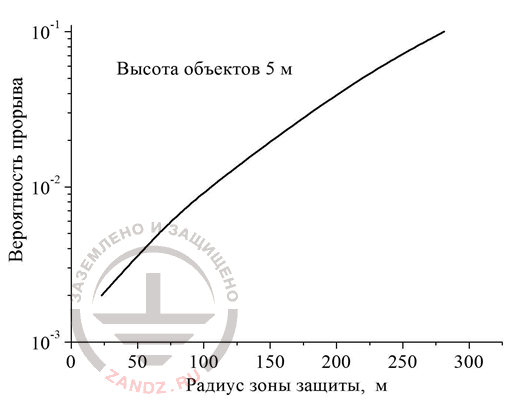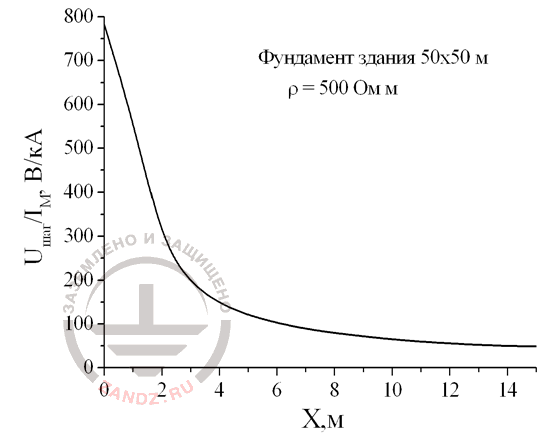The sixth part of the article "Lightning protection at a construction site"
Any high-rise building attracts lightning strikes and transports their current to the ground. From these positions, the type of lightning has no significant meaning, because the current of dozens of kiloamper can be produced by the upstream lightning. The level of construction completeness is also irrelevant. It is important, that the object walls would rise above the ground to hundreds of meters and that is why the number of lightning strikes into it is measured by the dozens per year. This event is not rare and it should be considered. Two circumstances present themselves the practical interest: how effective is the high-rise building in the role of a natural lightning rod for the auxiliary temporary buildings of minor height surrounding it and if step and touch voltages which inevitably accompany every lightning strikes dangerous to the construction personnel. Computer calculations give dfinite answers to both questions.

Fig. 8. The tower 300 m high in the role of a natural rod lightning rod.
Вероятность прорыва- breakthrough probability; Высота объектов 5 м – height of objects 5 m; Радиус зоны защиты, м – protection zone radius, m
Calculated data in fig. 8 reproduce not a very typical situation. The tower under construction achieved 300 m in height and performs the role of a natural lightning rod for the constructions surrounding it with the height of about 5 m. It is easy to make sure that the protection radius with the realiability 0,99 (breakthrough probability 0,01) doesn't exceed 100 m. It is three times less than the tower height! Such lightning protection cannot be called reliable. The tower draws lightning channels, but doesn't intercept all of them. The situation with the current spreading around the high-rise building is less favourable. In fig. 9 the distribution of voltage in the immediate surroundings of the foundation

Fig. 9. The distribution of voltage around the building foundation at the spreading of lightning current.
Фундамент здания – building foundation
Step voltage at the distance of 1 m from the foundaton is quite weighty - about 300 V per 1 kA of current. It should be considered. Practical experience says that the construction site around the erected high-rise building is a really dangerous place in a thunderstorm not only for the personnel, but for multiple electric utilities, especially for temporary ones, which have no protection means, screening and SPDs.
The conclusion from everything said above is unique - lightning protection cannot be temporary. Lightning protection of a building under construction should be provided with the same strict observation of regulatory prescriptions, as for a stationary building.
E. M. Bazelyan, DEA, professor
Energy Institute named after G.M. Krzyzanowski, Moscow
See also:
- How to choose lightning rods after all? (article by Professor E.M. Bazelyan)
- Lightning protection of high-rise buildings (article by Professor E.M. Bazelyan)
- Free webinars for designers of grounding and lightning protection
- Grounding and lightning protection projects in dwg, pdf formats
- Free consultations and assistance in calculation of grounding and lightning protection
Related Articles:
 6. How to do that?
6. How to do that?

